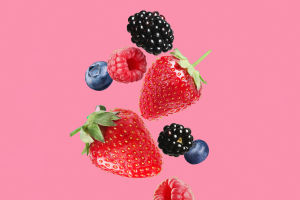Bush food is finally getting the spotlight it deserves.
Once considered niche, it’s now being embraced by foodies and health enthusiasts alike.
But what makes these Indigenous Australian ingredients so special? For Kungkas Can Cook’s owner, who grew up in Darwin, harvesting Aboriginal food was an everyday part of life. “Bush food makes sense. It’s grown on Country, so it’s plentiful and readily available,” she says.
And it’s not just about eating these foods, it’s about connecting with the land and the culture, with the knowledge of harvesting passed down through generations. The practice of wild harvesting is rich with ancient protocols. The process can involve talking to ancestors, singing songs, and making sure there’s enough left for the wildlife. It’s sustainable and deeply respectful of nature.
What Makes Bush Foods So Powerful?
Bush foods have long been a fundamental part of Indigenous Australians' diets and cultural practices, with a rich history that spans thousands of years. Beyond their culinary value, these foods have been used for medicinal purposes, offering a wealth of health benefits. As Rebecca Sullivan of Warndu highlights, Australia is home to around 6,500 edible native plants that continue to thrive and provide valuable nutrition.
These bush foods are not only integral to the traditional lifestyle but are also packed with unique compounds that help the plants endure extreme climates. These compounds, evolved over centuries to help plants survive in harsh environments, are now recognized for their impressive health-promoting properties. Rich in antioxidants, these natural substances have been found to support various aspects of human health, including immune function, digestion, and skin health.
Here are a few bush foods that pack a nutritional punch and are easy to add to your kitchen:
1. Wattleseed
Harvested mostly between October and December, wattleseed is one of the most versatile bush plants. In its green form, it’s cooked like legumes, and when dried, it’s ground into flour for bread.
2. Bush Tomato (Katyerr)
Known for its caramel-like sweetness and tangy, tamarind-like flavor, bush tomatoes are used in chutneys, spice mixes, and dressings.
3. Saltbush
These sage-colored leaves are commonly used as a salt substitute. In addition to flavoring bread, saltbush was traditionally used for medicinal purposes.
4. Pepperberry
Aromatic and peppery, pepperberries are loaded with antioxidants—higher even than blueberries. Native to Australia, these vibrant berries are not only a flavorful addition to dishes but also pack a punch when it comes to health benefits. Rich in compounds that help fight oxidative stress, pepperberries have been shown to support immune health, reduce inflammation, and protect against chronic diseases.
5. Strawberry Gum
Native to northern NSW, strawberry gum has a sweet, fruity flavor with a balsamic vinegar-like tang. Whether in teas, curries, or chutneys, its flavor is irresistible. Known for its aromatic qualities, strawberry gum is often used to infuse dishes with a unique and refreshing taste. Beyond its culinary allure, this native plant is also revered for its medicinal properties. Rich in antioxidants and essential oils, strawberry gum has been traditionally used to support digestion and relieve respiratory issues.
For Indigenous Australians, bush food isn’t just about nutrition or medicine—it’s about a deep connection to the land. These foods have been cultivated with respect for generations, and we’re lucky to have access to such unique and nourishing ingredients today.
So, are these the true superfoods? Absolutely. Bush foods aren’t just trendy, they’re packed with history, culture, and incredible health benefits!
Most Nutrient-Dense Foods (Superfoods) On The Planet |Most Nutritious Foods
Video by Med Today


